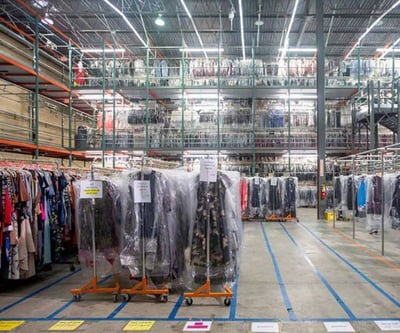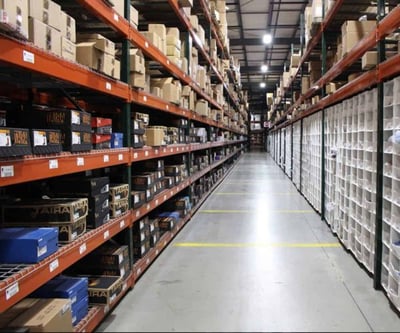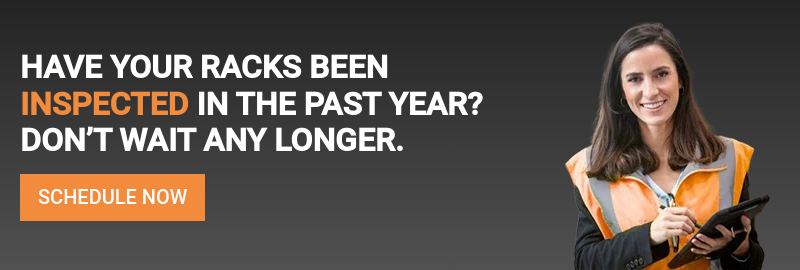Fashion logistics—also known as garment or apparel logistics—is a critical part of the global supply chain. It ensures that garments—whether high-end fashion or fast-moving retail inventory—are stored, handled, and shipped with speed and care. A well-run garment warehouse does more than move product; it protects clothing quality, reduces damage, boosts fulfillment speed, and upholds worker safety.
From choosing the right clothing racking systems to implementing safety audits and optimizing workflows, every detail affects performance. As e-commerce and sustainability reshape the industry, garment warehouses must adapt to stay competitive.
In this article, we’ll walk through storage systems, layout design, safety protocols, and the role of automation to help you elevate your garment warehouse operations.
Jump to Section
- What Is a Garment Warehouse?
- Industries That Rely on Fashion Logistics
- How Are Clothes Kept in a Garment Warehouse?
- How to Store Clothing Without Damage
- Best Practices to Organize a Clothing Warehouse
- Garment Warehouse Safety Checklist
- Day-to-Day Tasks in a Garment Warehouse
- Why Racking Safety Matters in Fashion Logistics
- FAQ
What Is a Garment Warehouse?
A garment warehouse is a specialized logistics facility designed to store, handle, and distribute clothing and textile products with speed, precision, and care. These warehouses play a crucial role in supply chain management, ensuring that retailers, wholesalers, and e-commerce businesses receive their inventory on time.
Unlike general warehouses, garment warehouses are tailored to fashion supply chains. They often include:
- Hanging garment systems to prevent wrinkles and maintain shape
- Shelving and pallet racks for folded items
- Vertical storage (mezzanines/catwalks) to maximize space
- Automated retrieval systems and WMS software for tracking and speed
With fashion’s shift toward sustainability, many warehouses are adopting energy-efficient lighting, recycled materials, and reverse logistics strategies. For instance:
- H&M’s garment recycling initiative encourages customers to return unwanted clothing to stores for collection and repurposing, supporting their circular fashion model. This approach supports sustainability (some collections are made with up to 20% recycled materials). It also strengthens brand loyalty, as customers receive a discount toward future purchases.

- Nike’s Rebound program is a great example of sustainable reverse logistics: it restores lightly worn footwear to near-new condition and resells it at a discount, minimizing waste and extending product life.

Industries That Rely on Fashion Logistics
Garment warehouses aren’t one-size-fits-all. These are the primary industries that depend on fashion logistics and apparel distribution:
- Fashion retailers and apparel brands–Large-scale clothing brands distribute inventory to stores and consumers across vast geographies.
Examples: Zara, H&M, Nike, Levi’s - E-commerce clothing platforms–Online-only fashion sellers require fast, accurate fulfillment with scalable warehousing and returns handling.
Examples: ASOS, Shein, Revolve - Luxury fashion houses and specialty boutiques–These operations require tailored storage for high-value, delicate items with attention to brand presentation.
Examples: Gucci, Chanel, independent designer labels - Department stores and wholesale clothing distributors–These warehouses manage a mix of SKUs from multiple brands and rely heavily on clear categorization and bulk handling.
Examples: Nordstrom, Macy’s
Each segment presents unique warehousing challenges, especially when it comes to protecting inventory, maintaining garment quality, and managing returns efficiently.
How Are Clothes Stored in a Garment Warehouse?
Proper clothing storage is critical to product integrity, picking accuracy, and operational speed. The clothing storage methods vary depending on the type of apparel, its packaging, and the warehouse handling needs. The two most common storage methods are:
Hanging Garments
Clothing like dresses, suits, and coats is stored on hangers using:
- High-density hanging systems with overhead rails
- Mobile garment racks for flexible configurations
- Multi-level catwalks that use vertical space effectively
Benefits:
- Preserves garment shape and finish
- Enables faster picking with clear visibility
- Reduces packaging waste
Safety Tip: Overhead rails and racks must be inspected regularly to ensure load integrity. Damotech’s engineered repair kits can restore damaged upright frames and prevent structural failures.
 Images 3&4: Left: Cantilever arms fitted with rails allow garments to hang freely and stay wrinkle-free. Right: Fabric storage racks are used to organize large volumes of apparel efficiently.
Images 3&4: Left: Cantilever arms fitted with rails allow garments to hang freely and stay wrinkle-free. Right: Fabric storage racks are used to organize large volumes of apparel efficiently.
Folded Garments
T-shirts, jeans, sweatshirts, and other durable apparel are stored on:
- Shelves and bins for easy access
- Pallet racks for bulk folded stock
- Carton flow racks for fast picking zones
Proper folding, stacking, and inventory labeling improve accuracy and reduce the risk of worker injury from repetitive strain or overreaching.
 Images 5 & 6: Left: At the Lululemon distribution center, folded apparel is carefully stacked for high-density storage. Right: Versatile fabric storage shelves designed for cartons, folded garments, and accessories.
Images 5 & 6: Left: At the Lululemon distribution center, folded apparel is carefully stacked for high-density storage. Right: Versatile fabric storage shelves designed for cartons, folded garments, and accessories.
How to Store Clothing in a Warehouse Without Damage
Clothing warehouses often use warehouse management systems (WMS) to track inventory, optimize slotting, and reduce handling errors. Slotting strategies help determine the best placement for each SKU, reducing picker travel time and improving accuracy during fulfillment.
- Racking inspections help prevent collapses from overloaded or corroded beams
- Climate control (HVAC and dehumidifiers) preserves fabric quality in humid or variable environments
- Barcoding and labeling systems streamline picking and reduce misplaced SKUs
- Returns from e-commerce are often restocked or rerouted using RFID-based WMS for quick re-entry into inventory.
Even static shelving systems can fail under excess load or unnoticed damage. Proper warehouse garment racking systems, compliant with OSHA pallet rack standards, prevent damage, maximize storage space, and enhance workflow.
Damotech offers both inspections and lifetime-guaranteed repair kits to keep racks safe and compliant.
Best Practices to Organize a Clothing Warehouse
An organized garment warehouse accelerates fulfillment, protects products, and enhances worker safety. Top strategies include:
1. Define Warehouse Zones:
- Receiving, storage, picking, packing, shipping
2. Choose Garment-Appropriate Racking:
- Hanging rails for formalwear
- Pallet racks or carton flow for folded items
3. Implement a Warehouse Management System (WMS):
- Track inventory in real time
- Reduce errors during picking
- Improve picker travel efficiency through smart slotting strategies
4. Warehouse Safety First:
- Schedule regular rack inspections
- Use rack protection like Damotech’s end-of-aisle guards
- Follow OSHA, CSA, and RMI guidelines
- Many warehouses also invest in ongoing rack safety training to reduce impact damage and ensure compliance.

 Images 7&8: Did you know some large garment warehouses offer rentable storage units, giving tenants the flexibility to store entire collections or seasonal inventory within a professionally managed facility?
Images 7&8: Did you know some large garment warehouses offer rentable storage units, giving tenants the flexibility to store entire collections or seasonal inventory within a professionally managed facility?5. Streamline Workflow:
- Avoid cross-traffic between workers, forklifts, and carts
- Use signage and color coding to reduce confusion
- Consider ergonomic features like adjustable rack heights, anti-fatigue flooring, and rotating tasks to protect workers from strain
Pro Tip: Set a recurring schedule for rack safety audits to catch early signs of structural fatigue or impact damage.

Day-to-Day Tasks in a Garment Warehouse
Warehouse workers perform tasks that require coordination, care, and consistency:
- Receiving and checking incoming inventory
- Storing clothing using proper racking and layout protocols
- Picking and packing garments for retail and online orders
- Quality control checks to prevent returns
- Equipment checks and racking inspections
A single collapsed rack could damage tens of thousands of dollars in product, or worse, cause injury. That’s why it’s crucial to invest in racking system protection and maintenance.
Automation is increasingly supporting manual tasks through:
- Robotic picking systems
- RFID-enabled inventory tracking
- AI slotting tools that reduce travel time


Images 9&10: Left: Robotic systems speed up online order fulfillment by picking, sorting, and re-slotting garments. Right: Robots use grippers and sensors to stack and move totes and dollies, automating packing and improving warehouse efficiency.
Why Racking Safety Matters in Fashion Logistics
Damaged racking is one of the most overlooked threats in fast-paced garment facilities. From forklift collisions to overloading, even minor damage can compromise an entire bay.
Consequences of ignoring racking damage:
- Collapsed racking structures
- Lost or damaged merchandise
- Injuries and OSHA violations
- Expensive downtime or legal exposure
Damotech helps prevent these scenarios with:
- Lifetime-guaranteed repair kits
- Rack protection guards for high-impact zones
- Rack safety training and engineering inspections
With thousands of garments in constant motion, fashion warehouses must prioritize structural integrity at every level.

Summary: Optimize Your Garment Warehouse Today
A high-functioning garment warehouse balances space efficiency, worker safety, and inventory protection. Whether you’re outfitting a small boutique or managing national distribution, your warehouse layout, racking systems, and safety protocols directly impact customer satisfaction and operational ROI.
Next step? Start with a free rack damage assessment from Damotech and identify risks before they escalate.
👉Book a Free Rack Safety Assessment
FAQ: Fashion Warehouse Safety & Storage
How do you store delicate garments without damage?

Use hanging garment systems with appropriate rail spacing to prevent wrinkles and preserve shape.
What type of racking is best for garment warehouses?

A combination of high-density hanging racks and pallet shelving ensures both visibility and space optimization.
How often should racks be inspected?

Every 12 months, or after any visible impact, layout change, or equipment collision.
What’s the most common cause of rack failure?

Forklift impacts and overloading. Prevent these with proper training and protective guarding.












